CLOSING THE CIRCLE - A plastic project
by Hendrik Hackl
in collaboration with the dinosaur experts Lena Pappschek and Zsombor Hobaj
A journey from Jurassic Plankton to Mineral Oil. And from oil to plastic.
About the recycled PET bottle to a 3D-printed ichthyosaur.
From the Anthropocene to the Jurassic age and back again.
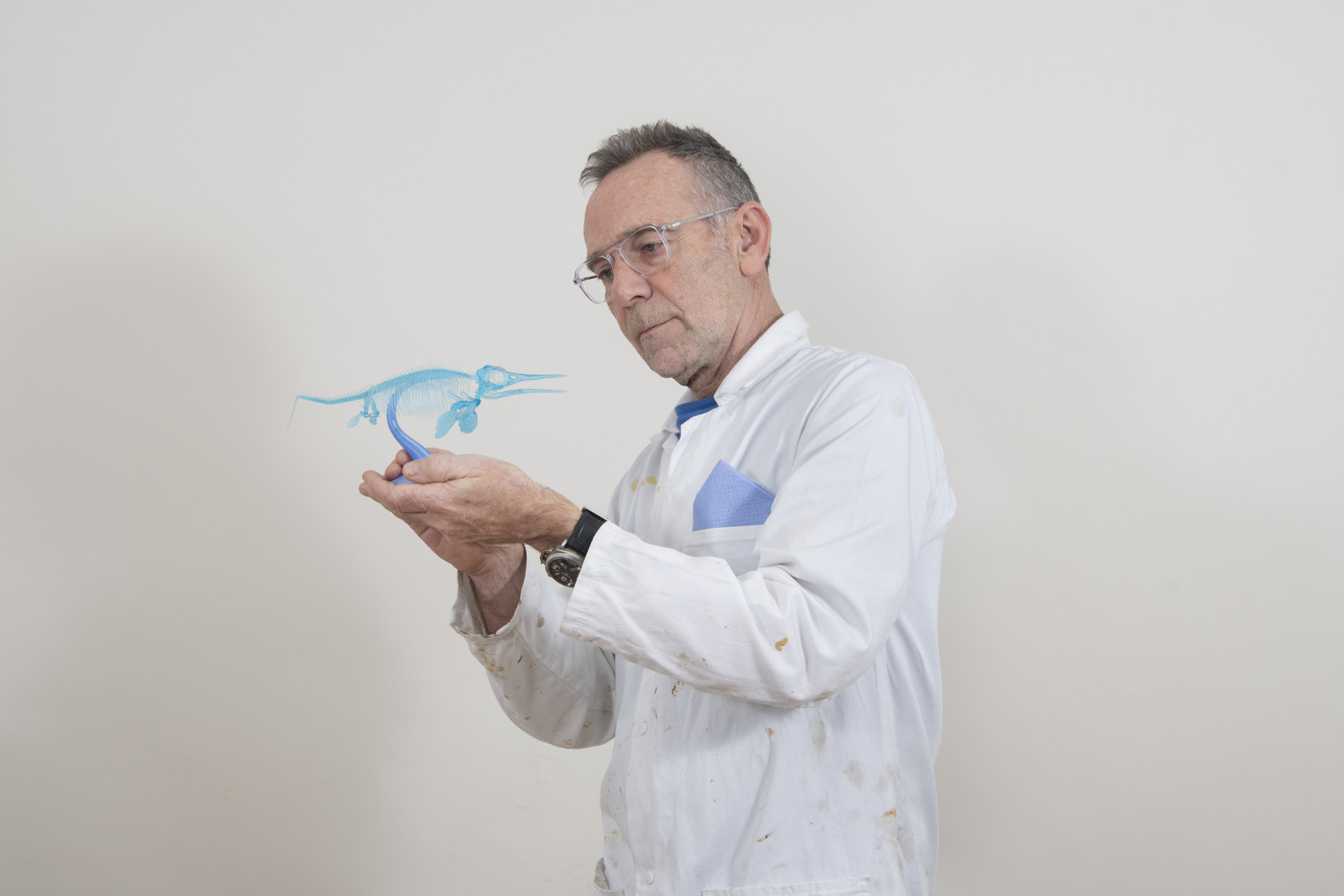
The artist with a model of the PET - printed Ichtyosaur
We have now arrived in the year 2024, the new millennium has only just begun yet it is already telling us one unpleasant story after another - People are steadily being haunted by “remnants” of their supposed progress.
Not only has mankind been almost permanently entangled in war and plagued by news of drought and famine, he is slowly but steadily being haunted by the more negative aspects of his previously presumed progress.
Tons and tons of plastic waste is floating in the seas and oceans all over the world (even in the Artic), and also washed up at high tide on our beaches.
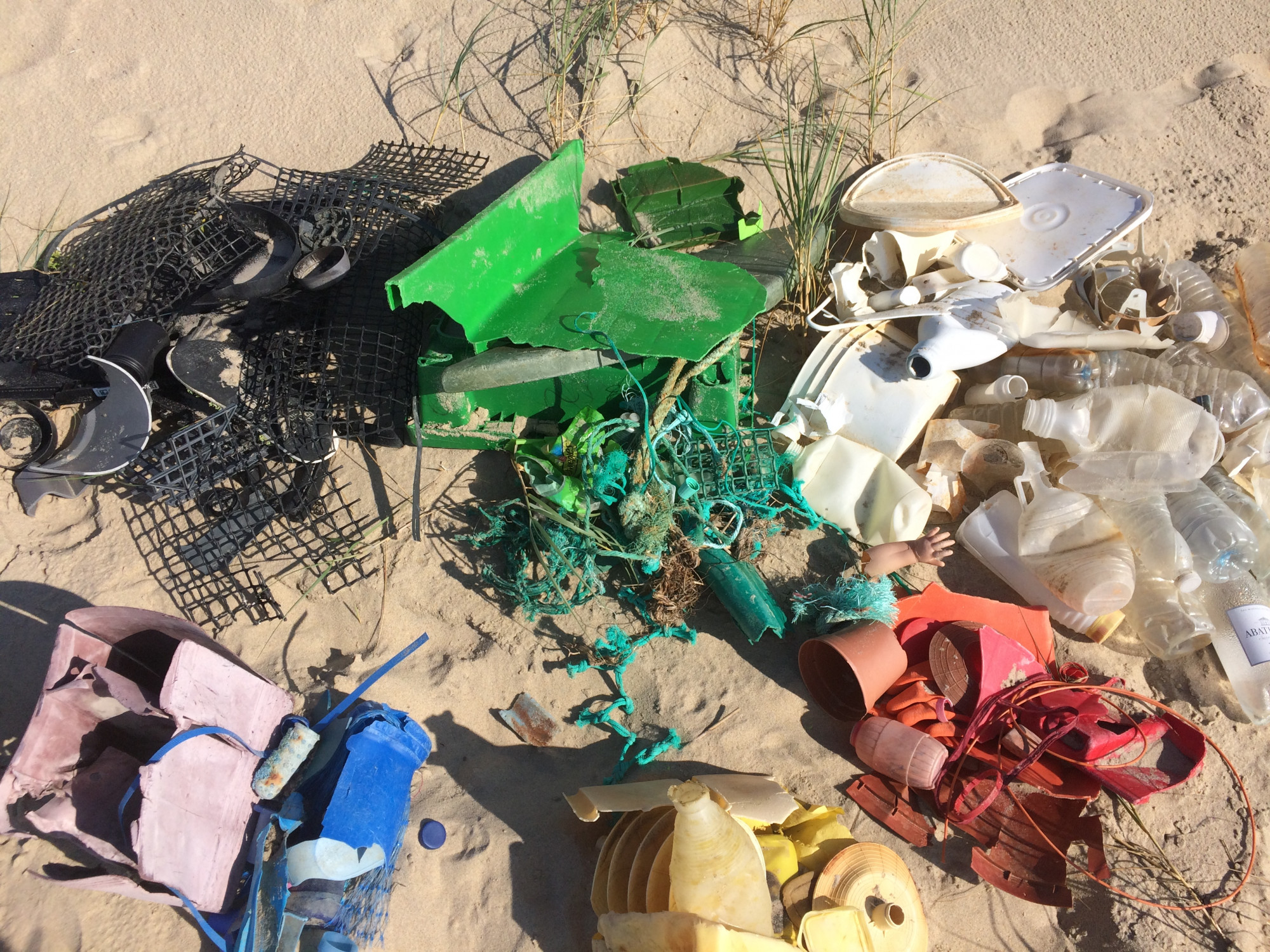
Plastic - found at the French Atlantic coast
Tons and tons of plastic waste is floating in our seas and oceans all over the world, (even in the Arctic) being constantly washed up on our shores at high tide.
Floating in the water and taken by fish to be a source of food and eaten as “nourishment” - in seas and oceans which have been inhabited by living creatures since prehistoric times. During the Jurassic period the oceans were home to plankton, fish, trilobites, octopus and ichtyosaurs.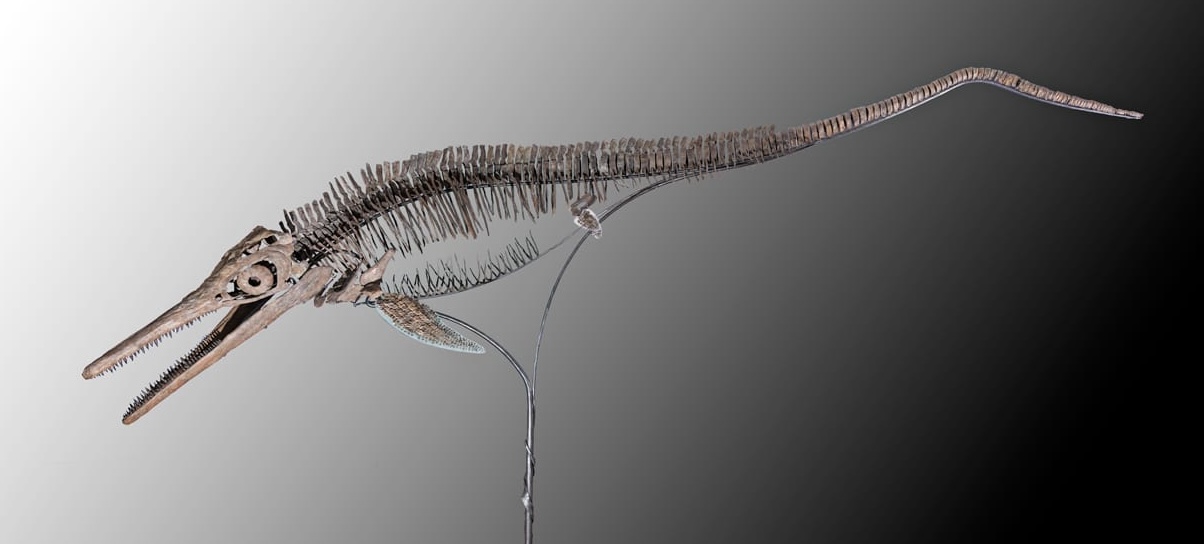
3D preparation of a 180 Mio years old Ichtyosaur from Germany
The fermenting plankton gradually began transforming into mineral oil - a fossil fuel - the basic component of plastic production including today`s PET bottles.
The “Kunst-stoff Project”* enables a missing link to emerge – the so far missing connection between 2 epochs millions of years apart – the prehistoric oceans and today`s throw-away, littering society.
Plastic recycling
These bottles are produced on a massive scale - 500.000.000.000 per year (!!) - filled up with various products, emptied and then, alas, simply discarded and thrown away. Via various routes a large proportion of these end their journeys in our seas and oceans.
World-wide many communities and local initiatives meet and collect these and other forms of plastic waste in order to take a stand against this flood of waste materials.
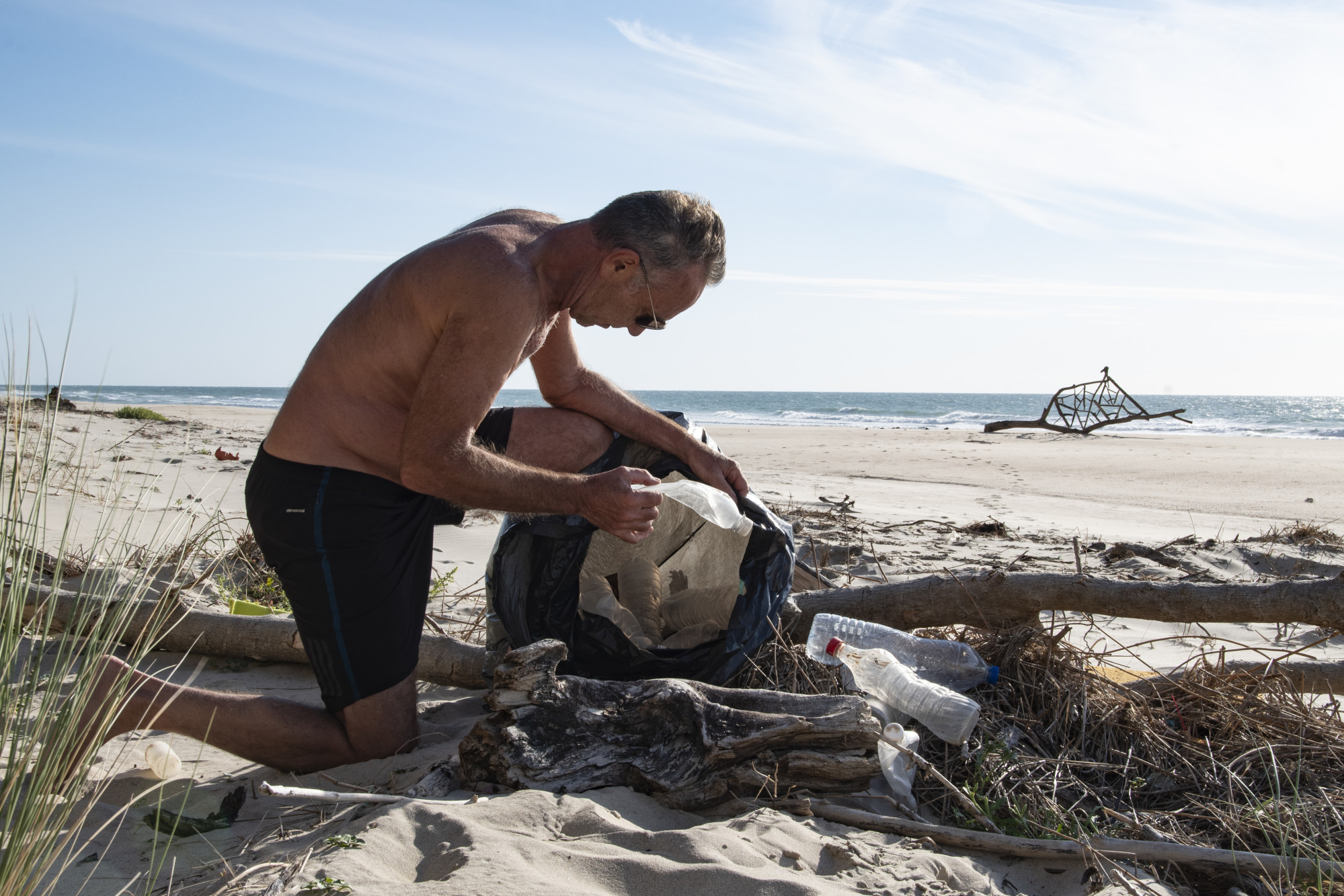
Hendrik Hackl collecting PET bottles at the Atlantic coast in France
Together with the Community action group Precious Plastic the Mannheim artist and sculptor Hendrik Hackl has met extremely resourceful members whereby bike-driven shredding machines and extruders (high pressure homogenizers) are used for shredding, melting and mashing the plastic waste. New products come into being from recycled materials.
The artist and sculptor Hendrik Hackl often travels to South west-France to find and collect plastic bottles which are washed up daily along the Atlantic coast. These "raw materials“ are then cleaned, later chopped up and the granules are bonded to a printable material – the filament – by means of a fuser.
That’s how the PET bottle lands in the 3D printer...
3D printing of the PET ichtyosaur skull
The return of the Ichthyosaur - Closing the circle
Using this PETr filament, the “modern” dinosaur species is “printed”. The „missing link“ between our throw-away society and prehistoric times emerges.
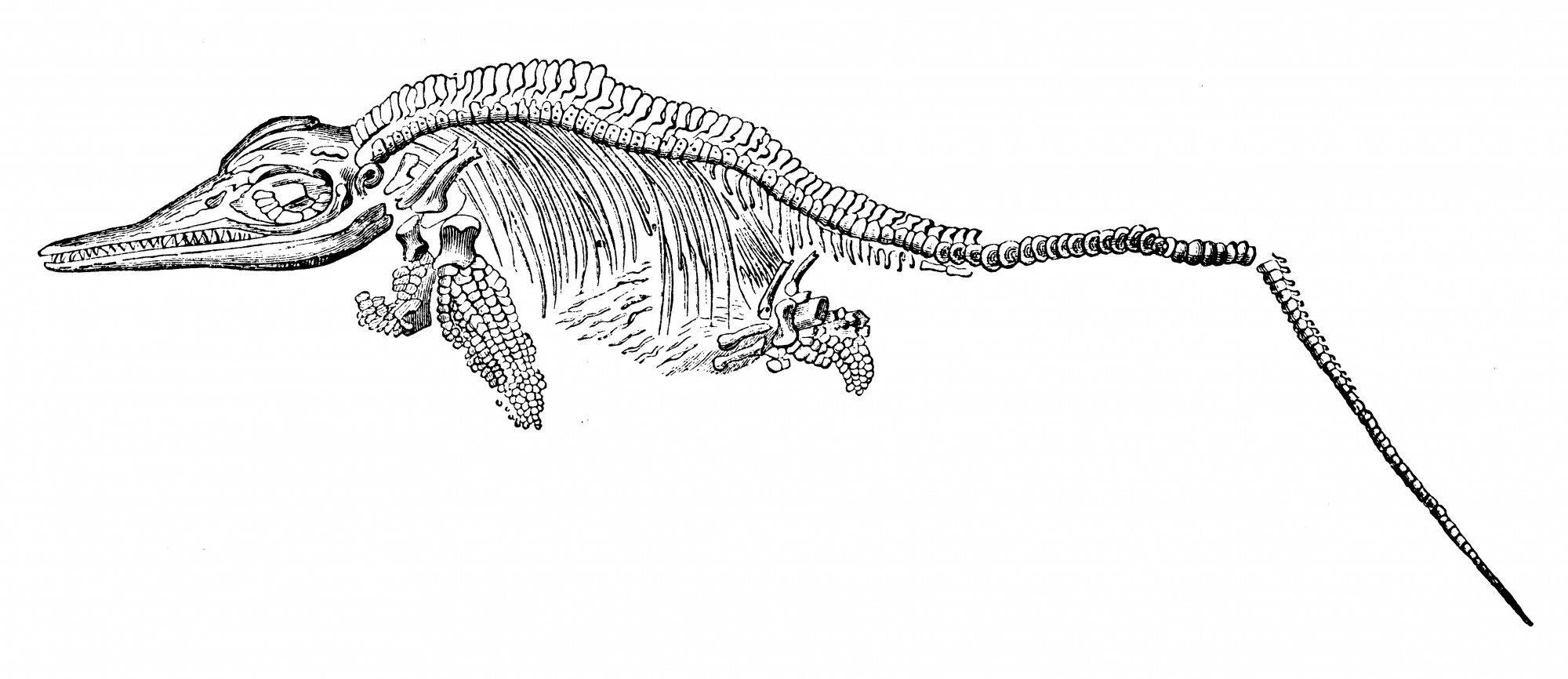
The image of a 180 million year old sea creature – an Ichthyosaur is transformed into the 21st century. The fossil undergoes its re-birth via metamorphosis of the Jurassic Sea's plankton and a 3D printer. The PET dinosaur is around 5 meters long, 1.6 meters wide, weights 25 kg and consists of 666 1,5 L PET bottles.
Each single, PET bottle blue bone of the three-dimensional printed Ichthyosaur is suspended on thin nylon threads – its skeleton as a mobile ́– and vibrated by the slightest puff of air from passing people – it starts floating again in the “here and now” - - - still moving after all these years...
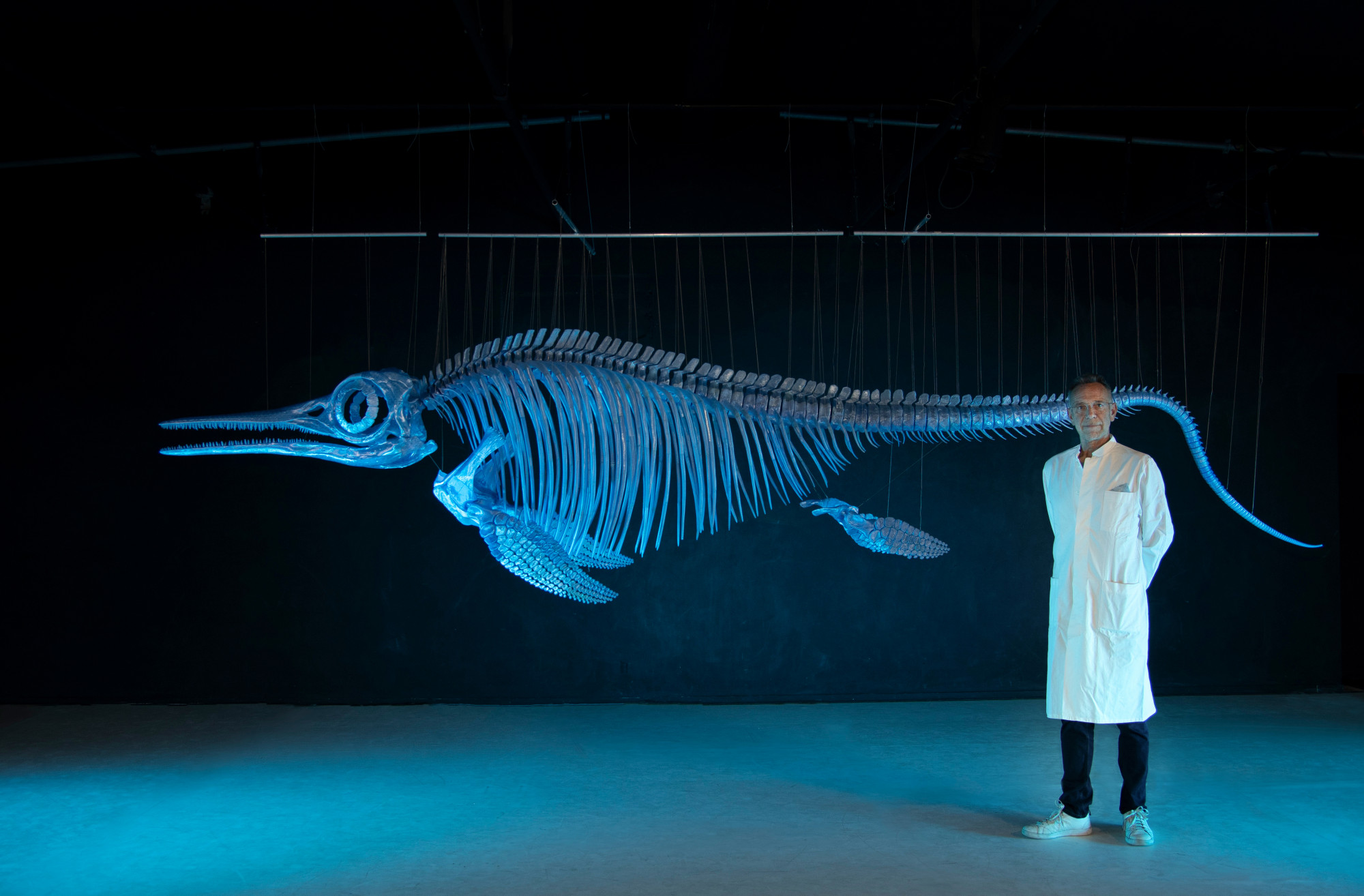
The PET - ichtyosaur at his premier installation in Vienna - March 2024
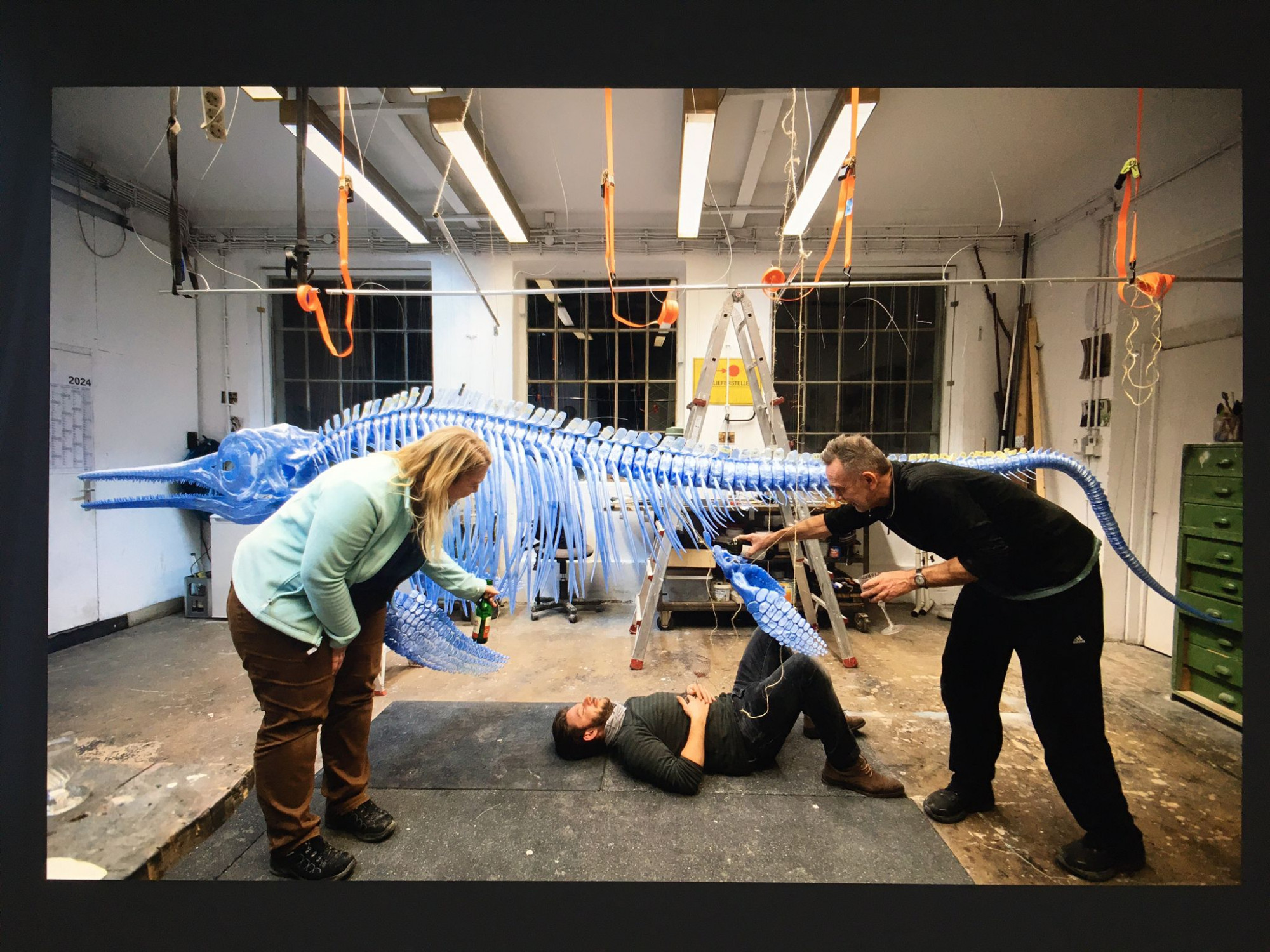
Lena, Zsombor and Hendrik after the successful setup